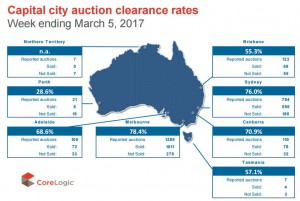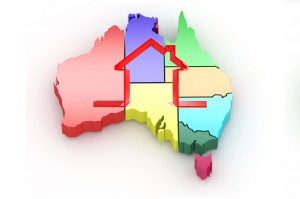Retail trade data for January 2016 was released by the Australian Bureau of Statistics (ABS) earlier this week.
After retail trade Retail trade data for January 2016 was released by the Australian Bureau of Statistics (ABS) earlier this week.
After the value of retail trade fell by -0.1% in December 2016, retail sales rebounded by 0.4% in January 2017.
Retail trade has now increased by 3.1% over the past 12 months, increasing at a rate above inflation. Across the states and territories, NT is the only region to have recorded a decline over the past year, down -0.8%.
Elsewhere, the increases in retail trade over the year have been recorded at: +3.2% in NSW, +3.8% in Vic, +2.8% in Qld, +4.5% in SA, +1.2% in WA, +3.5% in Tas and +4.0% in ACT.
The Reserve Bank (RBA) held their monthly monetary policy meeting for March earlier this week.
At the meeting the RBA board decided to keep official interest rates on hold at 1.5%.
The key points from the statement following the meeting were:
• The global economy has continued to improve over recent months with both business and consumer confidence having improved.
• Globally, headline inflation and bond yields have risen over the past year.
• The Australian economy has continued to expand with exports and non-mining investment expanding.
• Labour market indicators are mixed with significant geographic differences. Over the past year employment growth has been focussed on part-time rather than full-time however, the RBA expects continued employment growth.
• Inflation remains low, as do labour costs, and the RBA expects that underlying inflation will remain low for some time however, headline inflation is expected to be above 2% by year’s end.
• The housing market remains varied with values rising rapidly in some cities while they are falling elsewhere. The statement notes the pick-up in investor demand recently and also notes that supervisory measures have contributed to some strengthening of lending standards. The consensus from economic commentators seems to be that interest rates are likely to remain on hold for an extended period of time
The consensus from economic commentators seems to be that interest rates are likely to remain on hold for an extended period of time.
CoreLogic collected results for 83.9% of the capital city auctions held over the past week.
Based on these results, the combined capital city auction clearance rate was recorded at 74.6% across 2,907 auctions last week.
Clearance rates fell on lower volumes last week with the clearance rate recorded at 78.4% the previous week from 3,301 auctions.
Although auction clearance rates fell last week they remain much higher than they were at the same time last year when they were recorded at 68.6%.
Melbourne’s auction clearance rate fell from 81.0% the previous week to 78.4% last week while auction volumes also fell, down to 1,459 from 1,635.
In Sydney, clearance rates also from 80.0% to 76.0% while auction volumes fell to 950 from 1,210 the previous week.
Compared to clearance rates a year ago, each market recorded higher clearance rates this week however, clearance rates fell over the week in each market except Tasmania where they were unchanged.
Note that sales listings are based on a rolling 28 day count of unique properties that have been advertised for sale.
The number of newly advertised and total residential properties listed for sale has remained fairly steady over the past week.
The number of newly advertised properties is now higher than it was 12 months ago while total stock for sale remains lower.
The 48,673 newly advertised properties nationally is 1.8% higher than a year ago and the 229,325 total properties advertised for sale across the country is -5.4% lower than a year ago.
At a combined capital city level there are 30,519 fresh properties advertised for sale which is 4.3% higher than a year ago and 105,034 total properties advertised for sale which is -1.3% lower than a year ago.
The number of newly advertised properties for sale is higher over the year in all capital cities except Adelaide (-5.5%), Perth (-7.8%) and Darwin (-17.1%).
The total number of properties advertised for sale is lower over the year across all capital cities except for Brisbane (-6.1%).



No comments:
Post a Comment